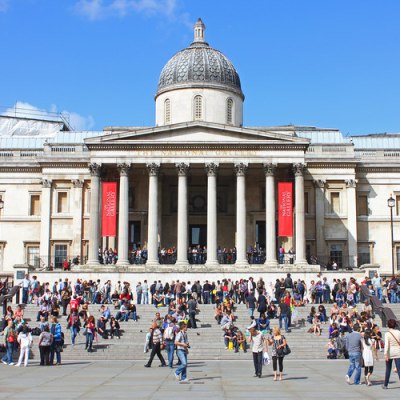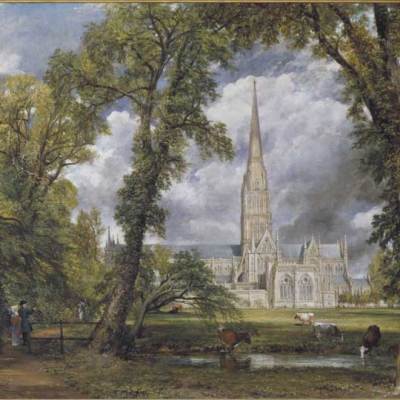In this final BBC Four instalment, Andrew Graham-Dixon embarks on an hour-long biographical account of David Bomberg, who he poses was ‘the most elusively original British painter of the 20th century’. He begins with Bomberg’s childhood in east London and the early modernist works he created as the technological advances of the early 20th century sped around him.
By the time the First World War began, the avant-garde world Bomberg had become a part of was sidelined. After enlisting in the Royal Engineers he was sent to fight at the Somme: while there, he wrote poetry, but was driven to distraction, shot himself in the foot and was permitted to return home, shell-shocked.
The works presented as Bomberg’s post-war paintings take rather unexpected subjects. Bomberg was employed by Zionists, and travelled to Jerusalem in 1923 where he focussed on painting landscapes and Zionist pioneer camps. A new preoccupation with human suffering led him, however, to sneak into the Armenian church, producing works that recognised the genocide that was taking place.
Much like last week’s episode on Sickert, the World Wars are awarded relatively little airtime. The Second World War is glossed over with brief reference to bombing. Instead, Graham-Dixon focuses on Bomberg’s mish-mash of styles, which he argues perplexed the artist’s contemporaries but fascinate today’s scholars. He expounds o his point for the remaining half hour, with various suggestions as to the artist’s mental, emotional and physical state over the decades preceding his death in 1957.
This series is a perfect example of how ploys to find ‘timely’ links to anniversaries and milestones – in this case the First World War centenary – can fall flat. Paul Nash is the only member of the trio that may be described as a ‘war artist’. Sickert and Bomberg are more often shown more at war with themselves and the art world, while the actual fighting went on elsewhere.
It is the pictorial analysis (in this episode for example, the camera zooms in skillfully on Bomberg’s In The Hold) and the dramatic filming that ultimately redeems this informative, if rather off-topic, series.
‘British Art at War: Bomberg, Sickert and Nash — David Bomberg: Prophet in No Man’s Land’ was first broadcast at 9pm, 28 September 2014, on BBC Four. Now available on BBC iPlayer.



